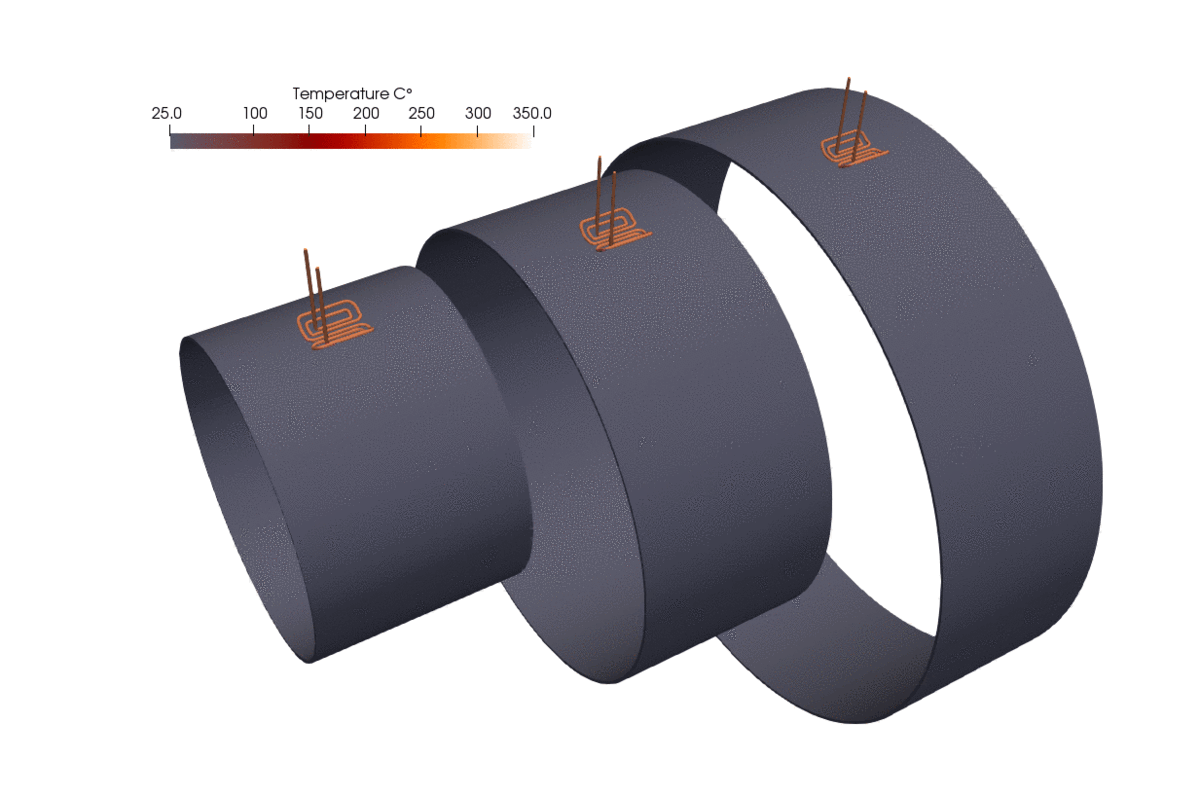Induction heating has been successfully used in industrial and construction welding applications, including refineries, petrochemical, pipeline, structural, shipbuilding, pressure vessel repair and mining. It is mainly used for preheating - to minimize the temperature difference between the arc and the base material.

Image courtesy - Miller Welds
Preheating slows the weld cooling rate and allows hydrogen to escape the weld puddle — two factors that help reduce the risk of cracking and the potential for a failed weld. When preheating or post-weld stress relieving are necessary, induction can save significant time and provide temperature consistency up to 1,450 degrees Fahrenheit or 787 degrees Celsius.
If we compare induction heating to two other common methods for preheating - resistance and open flame - induction is easier to set up, offers a fast time-to-temperature, and delivers
exceptional heating efficiency and uniformity in joint temperature, provides greater consistency in heating and eliminates a potential hydrogen source that is a byproduct of open-flame heating. Additionally, it's more economical, faster and safer with no risk of burn injuries.
Our customers use induction heating for welding of large range of diameter of pipes from 10" to 40" (25-100 cm). Induction can be used on many shapes, sizes and types of parts, from pipe and flat plate to elbows and valves. One aspect of induction that makes it attractive for complex shapes is the ability to adjust the coils during the heating process to accommodate unique parts and heat sinks.
How simulation can help?
Preheating and stress relieving parts are necessary steps in many welding applications, but the heating process can sometimes present challenges. Different applications and materials have different requirements, from preheat to post-weld heat treatment (PWHT). In addition, parts range in size and shape, and they may be located in the shop or in the field. These varying factors make it important to choose the right inductor coil design and heating system parameters to meet the varying requirements.
Choosing the right induction coil
In induction coil design, a solenoid or helix coil is one that is typically wrapped around the part, while a pancake coil — which looks similar in shape to a stovetop heating element — can lay flat on the part and be stretched out to cover a large area. Induction coils can be shaped to fit small, confined areas, and they also can be spread over a large area to bring a larger workpiece up to temperature. Simulation can help you choose the right coil design and avoid wasting time on reworking the system.

Proper temperature settings
It’s important to note that some applications may require going above the desired setpoint temperature to achieve the proper temperature at the root of the weld. This allows for some losses as the system heats the thickness of the part. For example, if an application calls for preheating to 260 degrees Fahrenheit (126 °C), it can be beneficial to set the surface temperature up to 320 (160 °C) or 335 (170 °C) degrees — especially on thicker materials or when induction is only used on one side of the workpiece — to ensure the minimum preheat temperature is reached throughout the part. With varying wall thickness of the pipe, simulation can help achieve heat uniformity by helping to choose the right temperature settings.
CENOS induction heating simulation software so far has helped our customers to build data for the process optimization of pipe welding, particularly:
Optimization of the inductor coil shape and geometry for each type of pipe or valve
Optimization of the "heating recipe" to reduce the heating time
Optimization of the temperature distribution to improve the quality of the welding

"We used CENOS software to optimize the pipe welding process, tailoring inductor shape and the heating recipe for various types of pipes. By doing simulation, we were able to optimize temperature distribution and level up quality of welding".
Antonio Marconi, R&D engineer at InovaLab (Italy)
Also, read the CENOS documentation page about simulating large rotating workpieces - for roll welded pipe - https://documentation.cenos-platform.com/docs/how-to/large-rotating-workpieces
CENOS Platform is a 3D simulation software that is focused specifically on induction heating and uses open source components and algorithms, making it affordable for small and medium companies.
Ask our support engineers (info@cenos-platform.com) more about the induction heating simulation capabilities with CENOS Platform and get your first simulation test project done in a few days!

